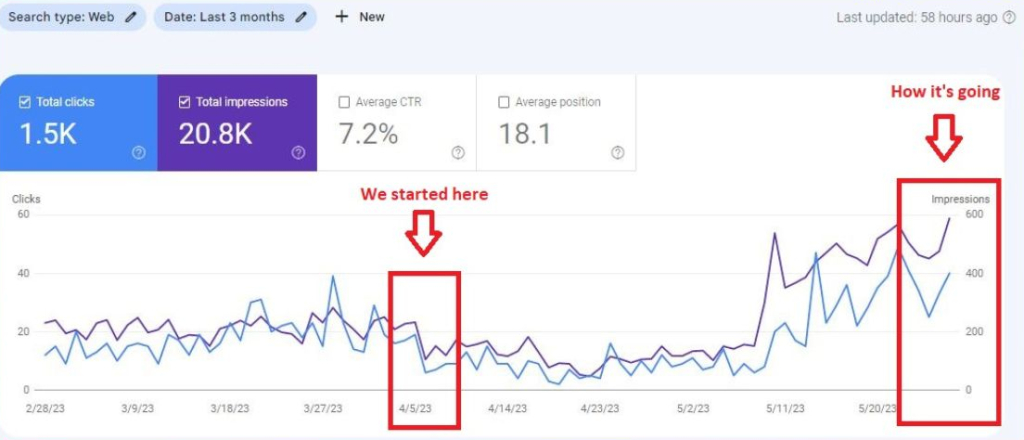
This case study highlights the challenges faced by a renowned real estate company in Bangladesh, including issues such as spammy backlinks, indexing problems, poor site structure, schema errors, mobile-unfriendliness, irrelevant internal link anchors, thin content, image optimization, HTTP/HTTPS conflicts, and keyword cannibalization. Through a comprehensive SEO strategy, the company was able to overcome these obstacles and achieve significant improvements in website rankings and organic traffic. This case study outlines the solutions implemented to address each problem, showcasing the positive impact on the company’s online visibility and overall performance.
Introduction
With the ever-increasing competition in the real estate industry, it is crucial for companies to maintain a strong online presence. This case study focuses on a renowned real estate company in Bangladesh that sought to enhance its website’s rankings and increase organic traffic. By identifying and resolving a range of SEO-related issues, the company aimed to revitalize its digital presence and attract a larger audience of potential customers.
Challenges Faced
The real estate company encountered several obstacles that hindered its online success. These challenges included:
- Thousand of spammy backlinks: The website had accumulated numerous spammy backlinks, which can negatively impact search engine rankings and overall domain authority.
- Indexing issues: A significant portion of the website’s pages were not being indexed, severely limiting its visibility on search engine results pages.
- Poor site structure: The menus and categories on the website were disorganized and not optimized, hindering user experience and making it difficult for search engines to crawl and understand the site’s content.
- Schema errors: Errors in the implementation of structured data markup (schemas) prevented search engines from properly understanding and displaying rich snippets in search results.
- Mobile-unfriendliness: The website was not optimized for mobile devices, leading to a subpar user experience and potentially lower rankings on mobile search results.
- Irrelevant anchors for internal links: Improperly chosen anchor texts for internal links resulted in confusion for search engines and diluted the website’s topical relevance and authority.
- Thin content: A significant portion of the website’s content lacked depth and substance, potentially diminishing its value in the eyes of search engines.
- Image optimization: Images on the website were not optimized, leading to slower load times and missed opportunities to improve search engine rankings through image search.
- HTTP/HTTPS conflicts: Technical issues relating to HTTP and HTTPS protocols were causing mixed content warnings, security vulnerabilities, and potential loss of visitor trust.
- Keyword cannibalization: Multiple pages on the website were competing for the same keywords, leading to confusion for search engines and a reduced ranking potential for those targeted keywords.
Solutions Implemented
To overcome the challenges faced by the real estate company, a comprehensive SEO strategy was devised and executed. The following solutions were implemented:
- Backlink profile cleanup: The website’s backlink profile was thoroughly analyzed, and spammy and irrelevant backlinks were disavowed. This process helped improve the website’s overall link quality and domain authority.
- Indexing issue resolution: To address indexing issues, Rank Math’s instant indexing plugin was installed, and all relevant URLs were fetched for indexing. This ensured that a larger portion of the website’s content became accessible to search engines.
- Site structure optimization: With the client’s permission, the menus and categories on the website were restructured and optimized. This improved user experience, facilitated better navigation, and allowed search engines to understand the website’s content hierarchy more effectively.
- Schema implementation: Relevant schemas, such as Local Business, Organization, Breadcrumb, How-To, Articles, and FAQs, were meticulously prepared and implemented across the website. This enabled search engines to display rich snippets and enhance the website’s visibility and credibility in search results.
- Mobile optimization: The website’s mobile-friendliness was improved by optimizing the website’s code and layout, resulting in significantly faster loading times and a seamless user experience on mobile devices. This optimization positively impacted mobile search rankings.
- Anchor text optimization: The team identified and corrected irrelevant internal link anchors, aligning them with the website’s content and targeted keywords. This optimization helped search engines understand the context and relevance of internal links.
- Content improvement: Approximately 80% of the website’s thin content was taken down, and a new blog plan was developed to create comprehensive and valuable content. This initiative aimed to improve the website’s relevance and authority on relevant topics.
- Image optimization: Images on the website were optimized by compressing file sizes, adding descriptive ALT texts, and improving their relevance to the surrounding content. This optimization enhanced the website’s performance and visibility in image search results.
- Resolving HTTP/HTTPS conflicts: The technical issue of HTTP/HTTPS conflicts was identified and resolved, ensuring all website pages and resources were loaded securely over HTTPS. This improved user experience and strengthened the website’s security and trustworthiness.
- Keyword cannibalization mitigation: To resolve keyword cannibalization, an in-depth keyword analysis was conducted, and appropriate optimizations were implemented on each page to clearly indicate their respective keyword focus. This helped search engines determine the most relevant page to rank for specific keywords, boosting the website’s overall keyword authority.
Results and Conclusion

By implementing the above solutions, the real estate company witnessed remarkable improvements in its website rankings and organic traffic. The website’s visibility in search engine results increased significantly, attracting a larger audience and potential customers. The comprehensive SEO strategy successfully addressed various technical and content-related issues, ultimately revitalizing the company’s online presence and positioning it for sustained growth in the highly competitive real estate industry.
